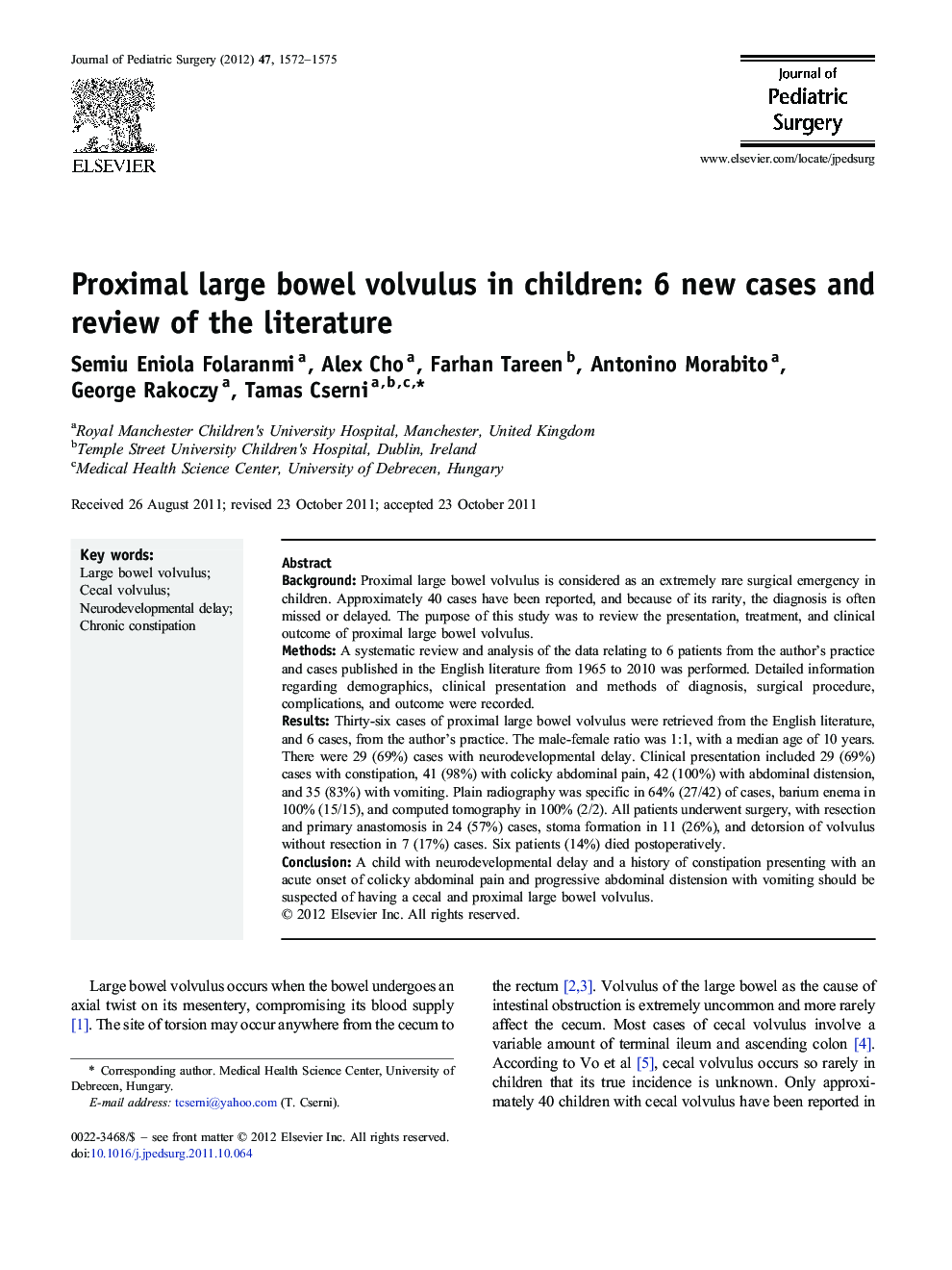| Article ID | Journal | Published Year | Pages | File Type |
|---|---|---|---|---|
| 4156538 | Journal of Pediatric Surgery | 2012 | 4 Pages |
BackgroundProximal large bowel volvulus is considered as an extremely rare surgical emergency in children. Approximately 40 cases have been reported, and because of its rarity, the diagnosis is often missed or delayed. The purpose of this study was to review the presentation, treatment, and clinical outcome of proximal large bowel volvulus.MethodsA systematic review and analysis of the data relating to 6 patients from the author's practice and cases published in the English literature from 1965 to 2010 was performed. Detailed information regarding demographics, clinical presentation and methods of diagnosis, surgical procedure, complications, and outcome were recorded.ResultsThirty-six cases of proximal large bowel volvulus were retrieved from the English literature, and 6 cases, from the author's practice. The male-female ratio was 1:1, with a median age of 10 years. There were 29 (69%) cases with neurodevelopmental delay. Clinical presentation included 29 (69%) cases with constipation, 41 (98%) with colicky abdominal pain, 42 (100%) with abdominal distension, and 35 (83%) with vomiting. Plain radiography was specific in 64% (27/42) of cases, barium enema in 100% (15/15), and computed tomography in 100% (2/2). All patients underwent surgery, with resection and primary anastomosis in 24 (57%) cases, stoma formation in 11 (26%), and detorsion of volvulus without resection in 7 (17%) cases. Six patients (14%) died postoperatively.ConclusionA child with neurodevelopmental delay and a history of constipation presenting with an acute onset of colicky abdominal pain and progressive abdominal distension with vomiting should be suspected of having a cecal and proximal large bowel volvulus.
